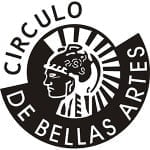Urban art as an educational tool: exploring the teaching of Spanish in the streets of Madrid
Madrid, Spain’s bustling capital, is not only famous for its rich history and more than awe-inspiring architecture, but also for its vibrant urban art scene. The streets of the city are adorned with graffiti. in a vindictive style (político)The exhibition is a collection of graffiti artists’ signatures, as well as large and medium-sized murals, which tell stories of passion, resistance and pure creativity.
In this context, TANDEM will explore how the arte callejero can become a valuable educational tool for those who seek to learning Spanish, especially foreign adults and teenagers who live in Madrid, or who are passing through the city, while studying one of our courses. Spanish as a foreign language courses.
21st century urban art as a reflection of emerging culture
To begin with, it would be interesting to stress that street art is a reflection of the culture and identity of a community. Madrid’s murals and graffiti are not only artistic expressions, but also visual narrators of history, society’s grievances and the emotions of those who live in the city.
By studying these works while walking around, foreign students have the opportunity to immerse themselves in Spanish culture., learn about its historical events, its conjuncture and understand the concerns of contemporary society. Those problems that are on our minds in 2024.
Vocabulary in context, explained in a user-friendly way

Urban artworks offer an authentic view in order to learn vocabulary. Graffiti often contains colloquial expressions, idioms and terms that can rarely be found in textbooks used by DELE teachers.
By learning these expressions on a tour guide of urban art in Madrid students can expand their vocabulary and better understand the actual use of Spanish in everyday situations. .
What are the arguments that affect us on a day-to-day basis? Social justice, equality, solidarity…
What function can urban art have?
What are the differences and similarities between street art and graffiti?
- Is graffiti categorised as art, or as vandalism?
Development of language skills

In addition to the details shared in the preceding paragraphs, contemporary art can also be used to develop language skills related to thereading, writing, and comprehension skills.
Reading the messages behind the artwork and in the murals themselves improves reading comprehension, while discussion of the meaning of the artwork promotes oral expression.
In addition, the creation of writing activities based on urban art allows students to practice writing composition, thus building a comprehensive set of skills to be developed not only within the classroom, but outside it. In this way, a circular and complete learning process is achieved.
Can street art foster creativity and interpretation?
On balance, yes. In fact, anything that means innovating can help to improve.
The visual nature of urban art invites for personal interpretation. While it is true that one person may analyse a work with his or her own ideas, another person does not necessarily share the same opinion. That’s the beauty of art.
Students can analyse and discuss the meaning of a mural from their own cultural perspective, which encourages creativity and critical thinking. This subjective interpretation does not only enriches the understanding of Spanish, but also stimulates cultural exchange outside the classroom.
It can also serve to develop people’s creative abilities. How many of you like to paint in your spare time?
Connection to history and current affairs

So-called contemporary muralism often depicts specific moments in our history and other events within the contemporary era. By exploring these artistic representations, students have the opportunity to connect Spain’s past and present, which contributes to a deeper understanding of the country’s society and evolution. For example, in the area of acquisition of fundamental rights and freedoms.
As if this were not enough, the discussion of current and topical issues on any local/national television, newspaper or radio helps students to stay informed about current affairs.
Immersion in the language in a real-life context
The study of Spanish through urban art offers students a linguistic immersion in an authentic environment. The idiomatic expressions, the linguistic turns of phrase and the diversity of accents present in the graffiti reflect the reality of the Spanish spoken in the streets of Madrid orBarcelona, multicultural cities where every year thousands of travellers decide to go sightseeing.
This direct exposure thus contributes to familiarisation with the language as it is spoken on a daily basis in the street.
Educational excursions focusing on urban art and graffiti

Whether in french, English, or Spanish, integrating such guided tours into the school curriculum can be an effective strategy to attract students’ attention. Are original activities andconsidered by the participants as cool plans.
Students can participate in guided tours to explore the murals and learn about the artists and their motivations. What did they want to explain through their works?
This direct experience not only enriches the teaching of Spanish, but also gives them the opportunity to interact with native speakers and practice what they learn in class.
Conclusion on urban art in Madrid
To conclude this article, we would like to mention that street art in Madrid can play a fundamental role in teaching Spanish to foreign adults and teenagers.
By using it as an educational resource, teachers can create enriching and contextually relevant learning experiences. This approach not only improves language skills, but also provides an authentic connection to Spanish culture and society.
In this way, urban art becomes more than just painting on the wall; it becomes an open-air museum, free of charge, full of living windows that open the door to the fascinating world of Spanish.














